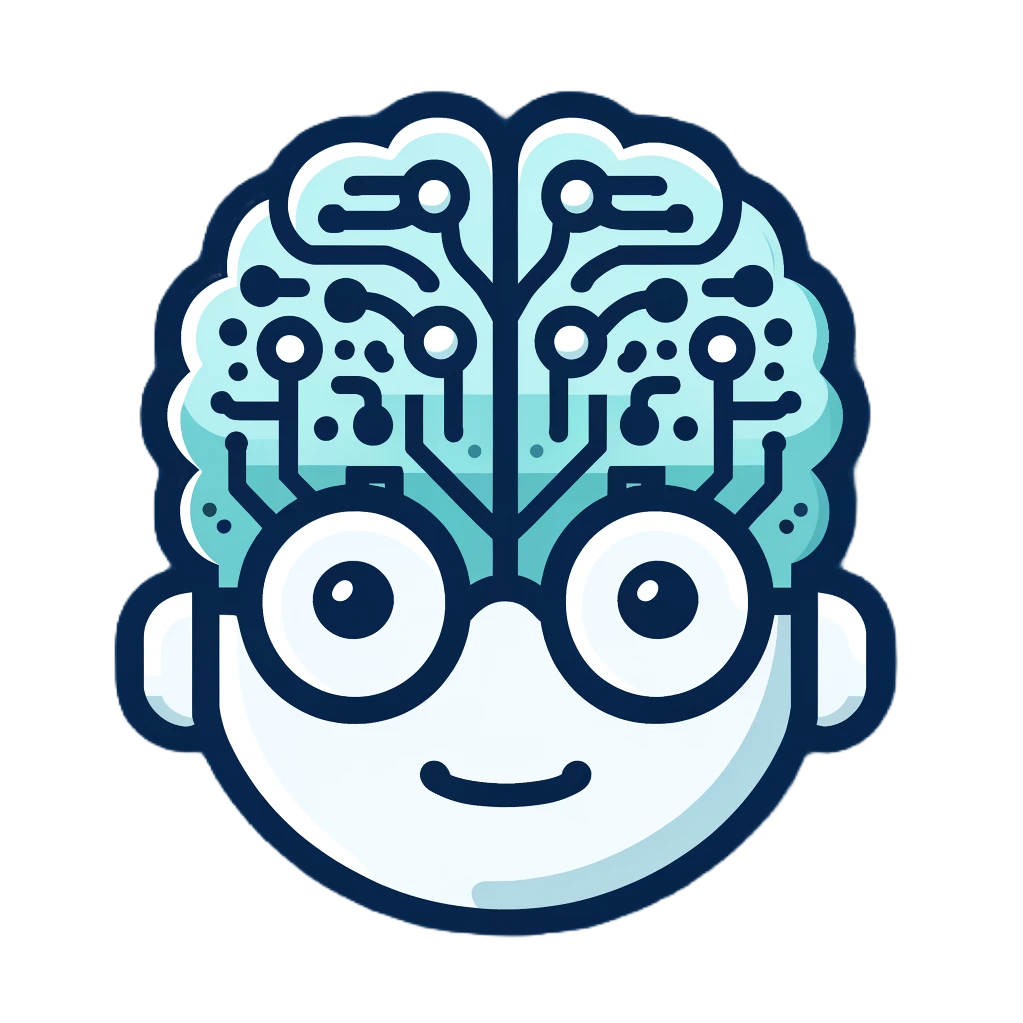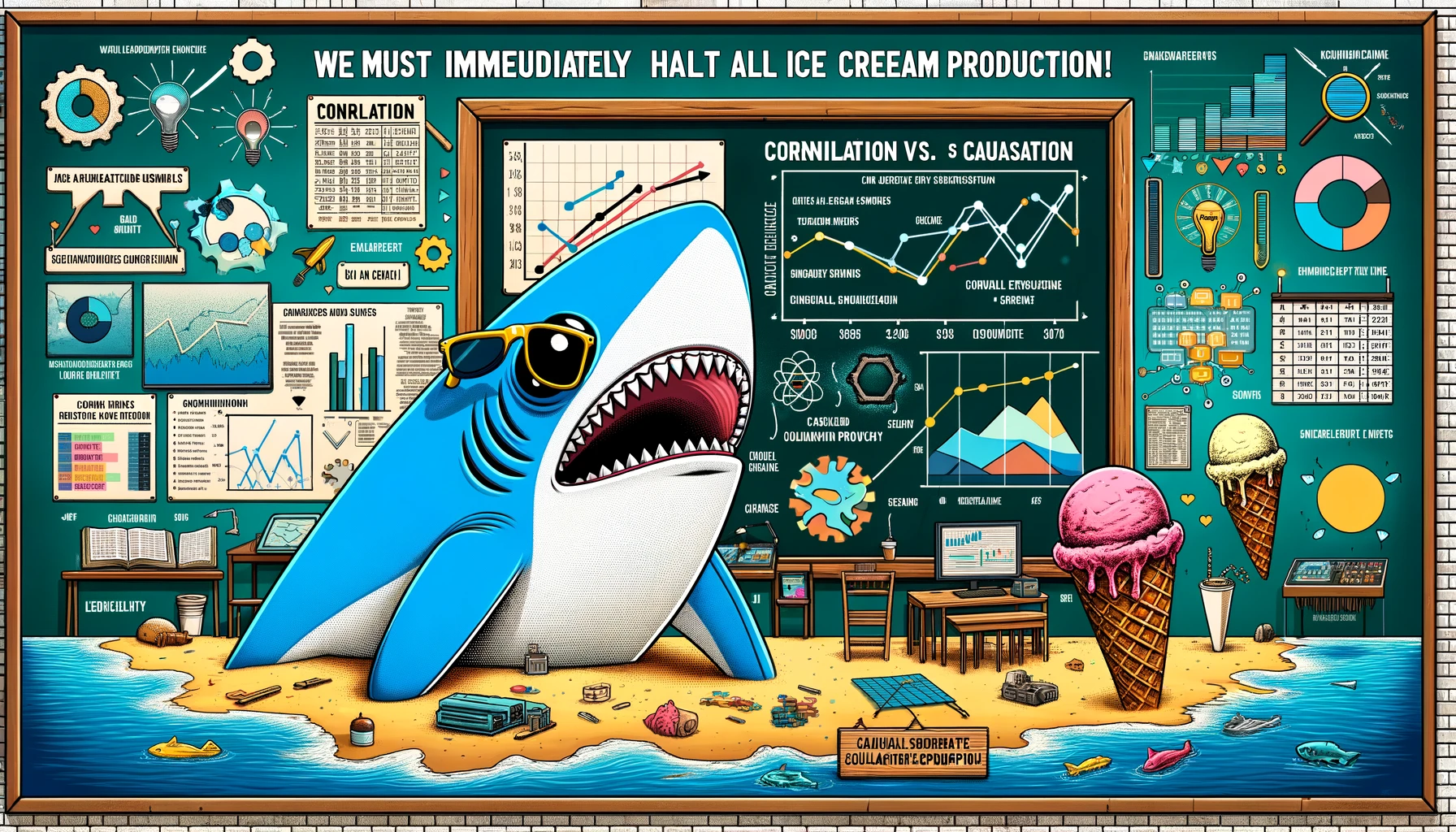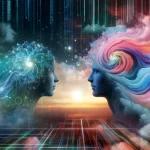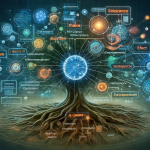Imagine this: every year, as the temperatures rise and summer heat waves sweep across the country, there’s a curious phenomenon that occurs. Ice cream sales skyrocket, and so do shark attacks. The correlation is undeniable. The data are clear. So, should we stop all ice cream production immediately to save beachgoers from the jaws of hungry sharks?
Of course not! The idea is laughable, right? Yet, this is a classic example of mistaking correlation for causation. If we were to take a dogmatic approach to correlations, we might indeed end up banning all ice cream to prevent shark attacks. But thankfully, most of us have the critical thinking skills to see the absurdity in this.
The key player here is temperature. As the mercury rises, so does the demand for delicious, cold treats like ice cream. At the same time, warmer weather means more people flock to the beaches to cool off in the ocean. And with more swimmers in the water, the chances of shark attacks naturally increase. So, it’s not the ice cream that’s attracting the sharks; it’s the heat driving people into the water.
This example, while humorous, highlights an important distinction in data analysis: correlation versus causation. Correlation occurs when two variables are related, but one does not necessarily cause the other. In contrast, causation indicates that one event is the result of the occurrence of the other event; there is a cause-and-effect relationship.
Why does this matter, especially in the realm of artificial intelligence? Well, our data systems and algorithms often handle vast amounts of data, identifying correlations to make predictions and decisions. If we misinterpret these correlations as causations, we can make erroneous decisions—like banning ice cream to reduce shark attacks!
Humans are naturally inclined to look for causes and effects. Our brains are wired to make sense of the world by finding patterns and linking events together. This tendency helps us navigate our environment and make predictions about the future. However, it also means we can easily fall into the trap of seeing causation where only correlation exists.
In the context of AI and machine learning, this distinction becomes crucial. Algorithms can identify patterns and correlations within data, but they lack the inherent understanding of causality. It’s up to us, the humans, to apply critical thinking and domain knowledge to interpret these patterns correctly. We need to recognize when a correlation might be misleading and dig deeper to uncover the true causal relationships.
But wait, there’s more! As if the world of AI wasn’t already fascinating enough, a new branch called causal AI is emerging from the depths of graph theory intersecting with philosophy. While most current AI and machine learning techniques are essentially very sophisticated pattern recognizers, identifying highly correlated relationships, causal AI aims to take things a step further.
Causal AI doesn’t just look for patterns; it dives into the tangled web of high-dimensional data sets to uncover the actual cause-and-effect relationships. By understanding these causal relationships, we can identify specific interventions that will have a real impact on the intended outcomes. It’s like being able to say, “Aha! It’s not the ice cream that’s the culprit, it’s the heat!” and then finding ways to address the true root causes effectively.
In future posts, we’ll delve deeper into the intriguing world of causal AI, exploring how these advanced techniques can revolutionize our approach to data analysis and decision-making. So, stay tuned and keep your critical thinking caps on—there’s a whole new level of AI understanding just around the corner. And in the meantime, enjoy your ice cream without fear of shark attacks, knowing that the real danger lies in misinterpreting data!




Pingback: Unveiling the Mysteries of Causality - The AI Psychiatrist